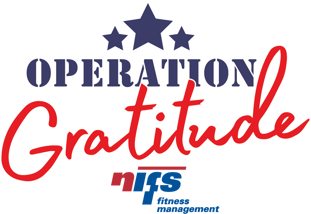 We know that practicing gratitude can have profound effects on our health and wellbeing, but in our fast-paced lives, it’s easy to brush off and overlook all of the good around us. Because of this, NIFS staff across the country took the month of November, in the spirit of Thanksgiving, to give thanks and practice gratitude with their residents through our own Operation Gratitude program. Some of the popular offerings and events included a month-long self-care calendar, relaxation through additional mindfulness and meditation practices, a mindful meal, journaling, workshops, small group discussions, gratitude letters and candygrams, random acts of kindness, philanthropy, and a whole lot of awe walks! Here are some of the benefits our participants observed:
We know that practicing gratitude can have profound effects on our health and wellbeing, but in our fast-paced lives, it’s easy to brush off and overlook all of the good around us. Because of this, NIFS staff across the country took the month of November, in the spirit of Thanksgiving, to give thanks and practice gratitude with their residents through our own Operation Gratitude program. Some of the popular offerings and events included a month-long self-care calendar, relaxation through additional mindfulness and meditation practices, a mindful meal, journaling, workshops, small group discussions, gratitude letters and candygrams, random acts of kindness, philanthropy, and a whole lot of awe walks! Here are some of the benefits our participants observed:
- Stress Reduction: Practicing gratitude acts as a powerful stress reliever while training our minds to focus on the good things in our lives and be present in this moment. This shift in our perspective helps us to counteract daily stressors and anxiety and promotes a feeling of calm and relaxation.
- Mental Health Benefits: Practicing gratitude has been shown to reduce anxiety and depression and increase our overall quality of life. When we shift our focus to recognize and appreciate the positive aspects of our life more, we adopt a more optimistic outlook and see the “negatives” less which dramatically improves our mental health as a result.
- Physical Health Benefits: The benefits of practicing gratitude extend far beyond our mental well-being and can even positively impact our physical health. Research suggests that practicing gratitude helps to reduce inflammation, improve immune function, lower blood pressure, and improve quality of sleep.
- Enhanced Relationships: When we express gratitude towards others, we strengthen our relationships and connection with them. Practicing gratitude can lead to improved communication, increased empathy, and stronger social connections. These connections can be linked to better mental and physical health outcomes as well.
- Improved Resilience: By practicing gratitude and focusing on the positive things in our lives we develop an abundance mindset which allows us to take on challenges with more ease. Individuals who are grateful exhibit increased resiliency, adaptability, and in turn can cope with life’s surprises with a bit more ease.
Throughout month of gratitude, we engaged nearly 2,500 different residents in gratitude offerings at least once, many multiple times, and collected donations for local food banks, the Salvation Army, Family Promise, and the Alzheimer’s Association. At the conclusion of the month, and the NIFS program, residents continued to practice gratitude by sharing what they appreciated about the program. Feedback ranged from feeling lighter and brighter throughout the tasks of day to feeling free to let go of pain after chemotherapy, and everywhere in between. We at NIFS are grateful for the communities we partner with and the ability to serve their residents every day!
When programming for your community’s fitness center, don’t forget to step outside of the fitness bubble sometimes and engage residents through whole-person wellness offerings. You just might be able to reach a whole new audience, and impact your current superusers in a new way, too!


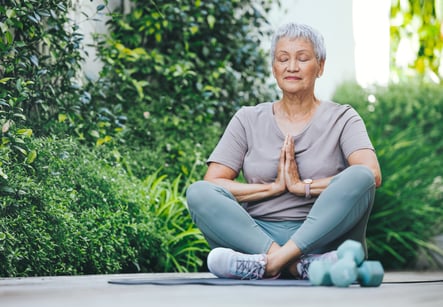 While most of us enjoy the hustle and bustle that comes with the season, we might find our lives accumulating stress. Sometimes we feel stress in the moment and sometimes it isn’t until the holidays have ended, and we feel the exhaustion set in. Thankfully in many senior living communities across the country, exercise and fitness professionals are including techniques in their group fitness or 1-1 programming that can be used to help with relaxation. Consider adding these in as part of your routine this season if holiday stress starts to wear you down!
While most of us enjoy the hustle and bustle that comes with the season, we might find our lives accumulating stress. Sometimes we feel stress in the moment and sometimes it isn’t until the holidays have ended, and we feel the exhaustion set in. Thankfully in many senior living communities across the country, exercise and fitness professionals are including techniques in their group fitness or 1-1 programming that can be used to help with relaxation. Consider adding these in as part of your routine this season if holiday stress starts to wear you down!
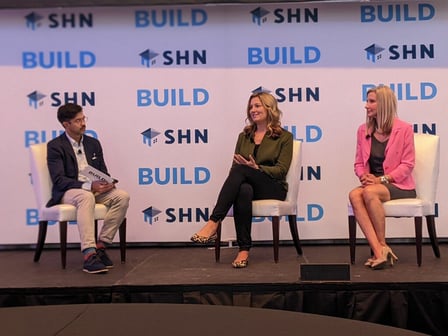 I had an opportunity to speak as a panelist at the
I had an opportunity to speak as a panelist at the 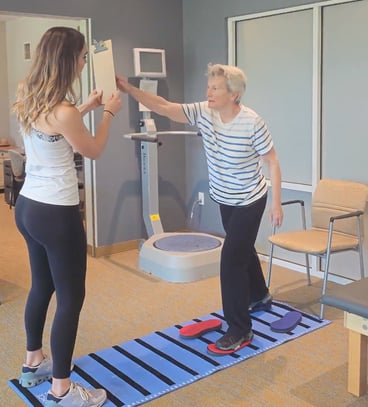 Every senior living community offers group fitness classes. If you want to stand out from the competition, you have to offer more.
Every senior living community offers group fitness classes. If you want to stand out from the competition, you have to offer more.
.jpg?width=365&height=243&name=GettyImages-1778515577%20(1).jpg) As the festive season draws near, the anticipation of joy, celebration, and connection fills the air. Yet, for many of us committed to maintaining a healthy lifestyle, the holidays can also bring a sense of unease. The abundance of indulgent feasts, tempting treats, and busy schedules can pose challenges to our well-established routines.
As the festive season draws near, the anticipation of joy, celebration, and connection fills the air. Yet, for many of us committed to maintaining a healthy lifestyle, the holidays can also bring a sense of unease. The abundance of indulgent feasts, tempting treats, and busy schedules can pose challenges to our well-established routines.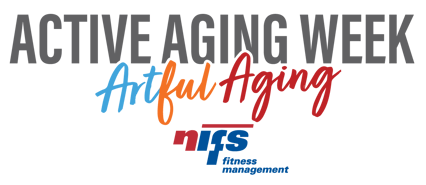 As the seasons change and leaves take on vibrant hues of red, yellow, and orange we are reminded that much like an artist, we can craft our lives in beautiful ways, and what better time to celebrate that reminder with our senior residents than during Active Aging Week? Active Aging Week, celebrated annually, shines a light on the importance of maintaining an active and engaged lifestyle as we age. This year, at NIFS, we’ve decided to focus on “aging artfully” and help the residents in the communities that we partner with age well through embracing their creativity.
As the seasons change and leaves take on vibrant hues of red, yellow, and orange we are reminded that much like an artist, we can craft our lives in beautiful ways, and what better time to celebrate that reminder with our senior residents than during Active Aging Week? Active Aging Week, celebrated annually, shines a light on the importance of maintaining an active and engaged lifestyle as we age. This year, at NIFS, we’ve decided to focus on “aging artfully” and help the residents in the communities that we partner with age well through embracing their creativity..jpg?width=413&height=246&name=GettyImages-1392938623%20(1).jpg) Striving to achieve 10,000 steps a day is a great way to move your body more and improve your overall health. Don't let the thought of 10,000 steps hinder you from trying. Start small and work your way to 10K a day this month!
Striving to achieve 10,000 steps a day is a great way to move your body more and improve your overall health. Don't let the thought of 10,000 steps hinder you from trying. Start small and work your way to 10K a day this month!
.jpg?width=458&height=305&name=GettyImages-805085582%20(1).jpg) What Makes Cycle So Great?
What Makes Cycle So Great?.jpg?width=461&height=307&name=GettyImages-1432465103%20(1).jpg)
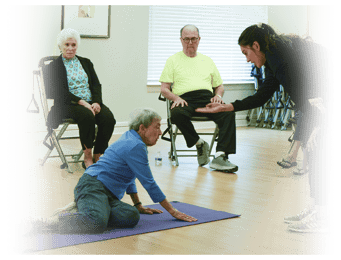 There are several health-related observances through the year and NIFS staff enjoy finding ways to use these to bring attention to important topics. One of those is Falls Prevention Week in September. As a fitness management provider for senior living communities, fall prevention is a hot topic so older adults can live vibrantly for as long as possible. But you might be wondering how can you make something that doesn’t sound so fun be engaging for residents? We have found that there is a love/hate relationship everyone has with any program labeled “Fall Prevention” because residents are certainly interested in learning about how to prevent falls but have a healthy fear of falling. What better way to face a fear than head on and in a practical way, right?
There are several health-related observances through the year and NIFS staff enjoy finding ways to use these to bring attention to important topics. One of those is Falls Prevention Week in September. As a fitness management provider for senior living communities, fall prevention is a hot topic so older adults can live vibrantly for as long as possible. But you might be wondering how can you make something that doesn’t sound so fun be engaging for residents? We have found that there is a love/hate relationship everyone has with any program labeled “Fall Prevention” because residents are certainly interested in learning about how to prevent falls but have a healthy fear of falling. What better way to face a fear than head on and in a practical way, right?